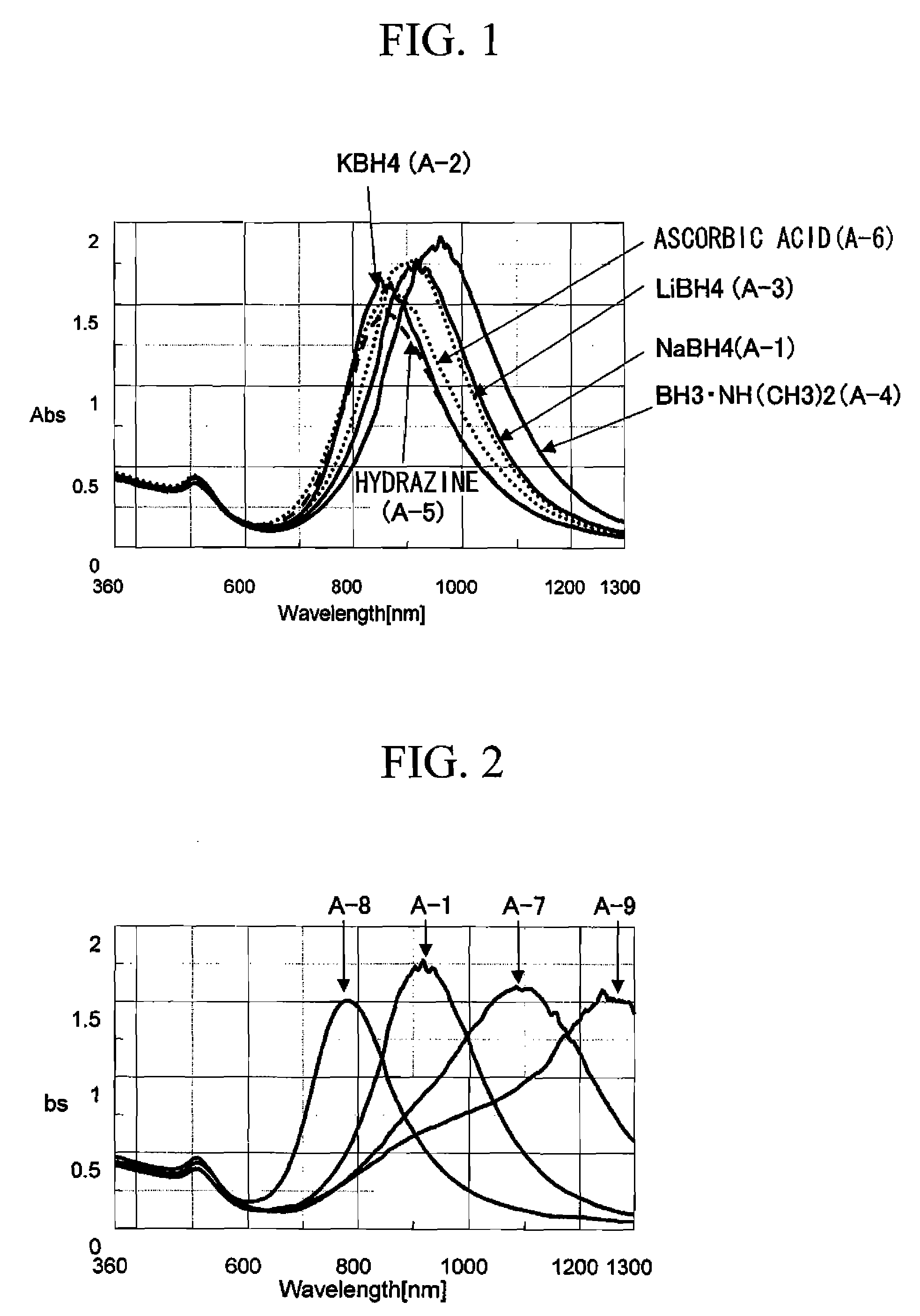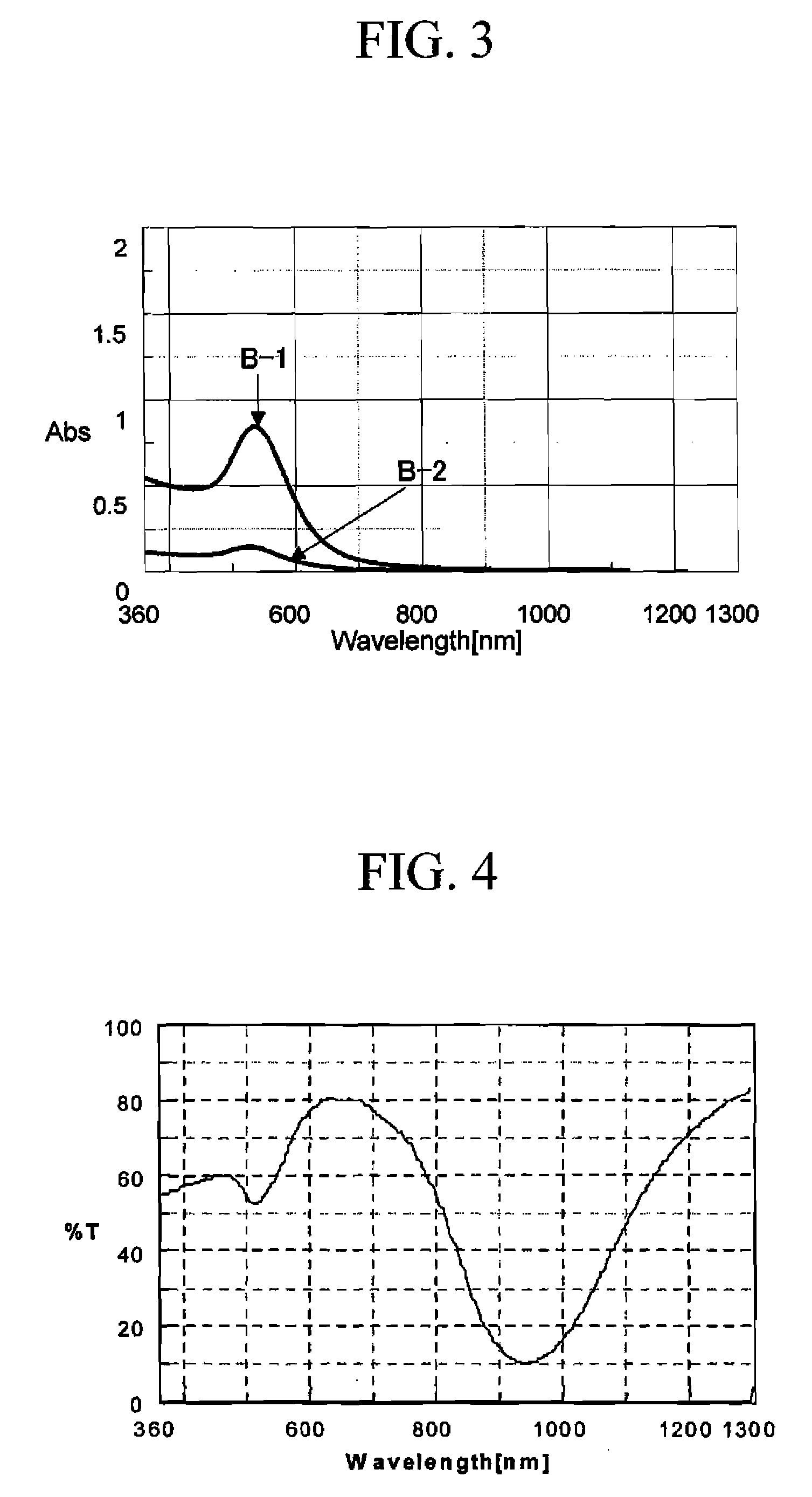Metallic fine particles, process for producing the same, composition containing the same, and use thereof
- Summary
- Abstract
- Description
- Claims
- Application Information
AI Technical Summary
Benefits of technology
Problems solved by technology
Method used
Image
Examples
examples
[0086]The present invention will be described in detail with reference to examples and comparative examples herein below. The following examples are directed to gold nano rods. The examples show a light absorbing function mainly at the wavelength of 530 nm to 1242 nm. However, the examples may obtain the same light absorbing function even at the wavelength of 530 nm to 1242 nm or greater, by changing conditions such as the type, length, composition of the metal nano rods. Spectroscopic characterization was measured using V-570 (produced by JASCO Corporation; trademark). Specific resistance value was measured using Loresta GP (produced by Mitsubishi Chemical Corporation; trademark). The condition of producing the metal nano rods is listed in Table 1.
example a-1
[0087]0.2 ml of 10 mM silver nitrate aqueous solution was added to 10 ml of 300 mM hexadecyl trimethyl ammonium bromide (CT16AB). The addition of the silver compound serves to adjust the aspect ratio of the gold nano rods, similarly to the known combining method of the gold nano rods. 0.4 ml of 24 mM gold chloride acid aqueous solution was added to the obtained solution and then was stirred. Subsequently, 10 mM sodium boron hydride was added to the resultant solution used as the strong reducing agent of the first reduction process on six times until the additive amount of the sodium boron hydride became 6 μmol. As sodium boron hydride was added, gold ions were reduced. The color of complex of Gold ions and surfactant in the solution (yellow color, absorption wavelength 394 nm) was weak, and then after 10 minutes, a nearly colorless solution having a weak orange color was obtained.
[0088]At this time, the reduced amount of the gold ions was 90%. The value was obtained by adding the st...
example a-2
[0090]The aqueous solution was combined in a manner similar to Example A-1, except that 10 mM the potassium borohydride aqueous solution was added as the strong reducing agent of the first reduction process until the additive amount of the potassium borohydride became 6 μmol. The amount of the metal ions with the thus obtained aqueous solution was zero. In addition, gold nano rods having the short axis of approximately 7 nm, the long axis of approximately 34 nm, the aspect ratio of approximately 4.8 and absorption at the vicinity of 870 nm were obtained (see FIG. 1).
PUM
| Property | Measurement | Unit |
|---|---|---|
| Fraction | aaaaa | aaaaa |
| Fraction | aaaaa | aaaaa |
| Percent by mass | aaaaa | aaaaa |
Abstract
Description
Claims
Application Information
 Login to View More
Login to View More - R&D
- Intellectual Property
- Life Sciences
- Materials
- Tech Scout
- Unparalleled Data Quality
- Higher Quality Content
- 60% Fewer Hallucinations
Browse by: Latest US Patents, China's latest patents, Technical Efficacy Thesaurus, Application Domain, Technology Topic, Popular Technical Reports.
© 2025 PatSnap. All rights reserved.Legal|Privacy policy|Modern Slavery Act Transparency Statement|Sitemap|About US| Contact US: help@patsnap.com


